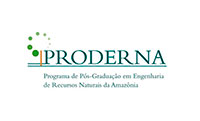WREN 2016
The Workshop on Renewable Energy Sources and Nanotechnology
SEMINARS

Seminar 4: Photocatalysts for solar energy conversion: application in solar cells, water treatment and production of solar fuels.
Speaker: Claudia Longo
Summary: The research of new photocatalysts for solar energy conversion is motivated by its academic relevance as well as technological and environmental concerns. The photocatalytic activity of semiconductors for solar energy conversion has been investigated since Fujishima and Honda reported the photoinduced splitting of water over TiO2 electrodes in 1972. The process resulted from the charge separation that occurs at catalyst surface under irradiation. Briefly, the semiconductor collects photons with
energy that exceeds the energy gap between valence and conduction bands (VB and CB); an electron is promoted from VB to CB, leaving behind a positively charged hole. Then, reactions involving the electron, the hole or intermediate species (such as OH and O2- radicals) can take place. In the Institute of Chemistry-UNICAMP, in collaboration with researchers of several universities in the world, we have been synthesizing semiconductor oxides, investigating their photoelectrochemical properties and evaluating their application for solar energy conversion. TiO2 electrodes, modified by visible-light absorbing dyes, are used for assembling solar cells with polymer electrolytes. TiO2, as well as TiO2/WO3 electrodes, are used as photoanodes for water remediation by photocatalytic oxidation of contaminants of emerging concern or bacteria inactivation. Also, modified TiO2 electrodes are used as photoanodes for water splitting and production of “solar H2”. Other applications include the production of methanol and hydrocarbons from CO2 reduction, interesting “solar fuels” that can storage solar energy. In this contribution we will discuss the advances and perspectives for developing photocatalysts for solar energy conversion.

Seminar 5: Modulating the conversion of CO2 and glucose to added value products by photoeletrocatalysis.
Speaker: Maria Valnice Boldrin Zanoni
Summary: The present work aims to show the enormous contribution of some materials with nanostructured architectures in the application of photoelectrocatalysis as a tool to improve the CO2 reduction and glucose conversion to added values products. The performance of semiconductors such as Ti/TO2 Cu/Cu2O, NTTiO2/Pt (nanotubes of Ti/TiO2/Pt), Ti/TiO2/CuO p-n junction, Si/TiO2/Pt, and Ti/TiO2 decorated with copper (II) aspirinate on the photoelectrocatalytic CO2 reduction were compared evaluating
mainly methanol, ethanol, acetaldehyde, acetone, methane, and ethane and hydrogen production. The morphological and structural characterization of all semiconductors was carried out by XRD, EDS and FEG-SEM analysis. The photocurrent response was evaluated by linear scan voltammetry with and without CO2 using similar geometric areas. The photoelectrochemical experiments were performed in a two compartment reactor, where the semiconductor was irradiated by UV-Vis light (125 W) and submitted to controlled-potential. Pt gauze was used as counter electrode and an Ag/AgCl (KCl sat) as reference. The probably products formation of methanol, ethanol, acetaldehyde, formaldehyde and acetone were identified and quantified by CG-FID (CP-3800 Varian) and HPLC-DAD. The photocurrent response for the entire semiconductors in presence of CO2 and UV–Vis light presented a higher photocathodic current attributed to CO2 photoreduction. The electrode material, pH, electrolyte and applied potential has shown great influence in the product generated during CO2 reduction. Best results were obtained in Cu/Cu2O semiconductor, where 96% of faradaic efficiency was obtained for methanol formation and Si/TiO2/Pt that presented 90% for ethanol generation. In addition, the conversion of glucose to glyconic acid was observed with high efficiency for photoeletrocatalytic conversion carried out in aqueous solution at nanotubes Ti/TiO2 electrode. The mechanism of product formation is discussed and influence of each material in the reduction process.

Seminar 6: Understanding the Molecular Behavior of Organophosphorus and Organotin compounds to Design their Effective use as Agrochemicals: Exploration via Quantum Chemistry and Experiments.
Speaker: Teodorico C. Ramalho
Summary: The high frequency of contamination by herbicides suggests the need for more active and selective agrochemicals. Organotin compounds are the active component of some herbicides, such as Du-Ter and Brestan, which is also a potent inhibitor of the F1Fo ATP Synthase. That is a key enzyme, because the ATP production is one of the major chemical reactions in living organisms.
Thus ATP Synthase is regarded as a prime target for organotin compounds. In this line, molecular modeling studies and DFT calculations were performed in order to understand the molecular behavior of those compounds in solution. In addition, we investigated the reaction mechanism by ESI-MS analyses of the diphenyltin dichloride. Our findings indicate that an unstable key-intermediate generated in situ might take place in the reaction with ATP Synthase.





.png)

Wren 2016. © All Right Reserved


